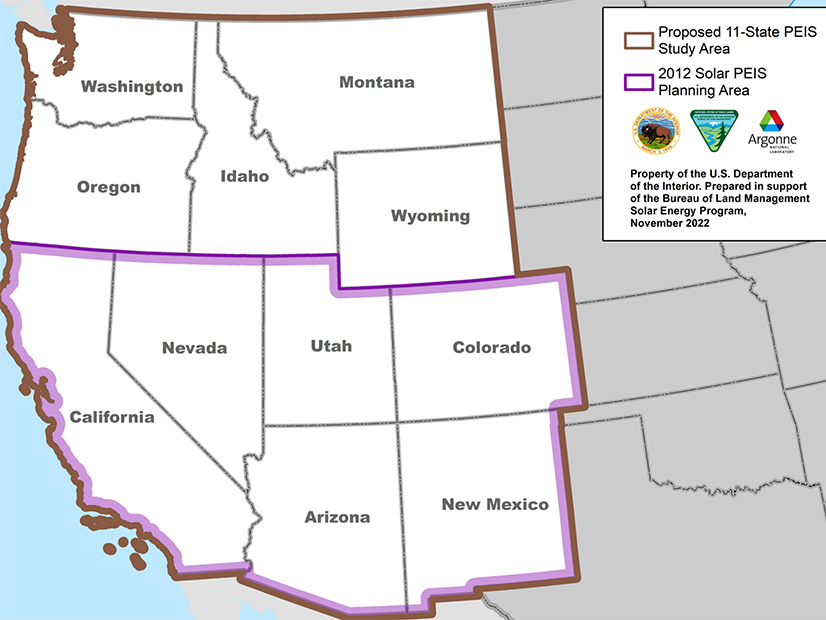A group of 15 local government agencies in Pennsylvania are pooling their purchasing power to procure more than 15 MW of solar energy.
The Centre County Solar Group — which includes municipalities, utility authorities, school boards and a state college that together operate 384 energy accounts — are in negotiations for a power purchase agreement with three of the respondents to a request for proposals issued on Sept. 13 seeking “a long-term competitive source of electricity that meets the evolving sustainability and climate action needs of each entity.”
The RFP sought a grid-scale solar energy provider that could meet the needs of all of the local government entities, who planned to collectively strike a power price that would then be signed individually to account for certain local differences.
The combined energy use of the 15 entities would be about 32 million kWh a year, a size that, if handled by a single project, could be met by a solar project of about 15 to 20 MW that would cover more than 125 acres of land, according to Peter Buck, vice chair of the group.
The RFP amounts to the group saying: “Dear market, both retail suppliers and developers, do you have a project that would supply most or all of that? Show us what you got,” Buck said.
Three solar developers and an energy retailer responded, outlining nine solar project options with agreement term options of between 15 and 25 years, according to an update delivered in December to the State College Area School District’s board of directors, of which Buck is a member. The 6,800-student school district, which serves the borough of State College and several surrounding townships, is one of the main organizers of the effort and accounts for about 45% of the energy that the group expects to use from the project.
Buck told the board at its meeting Jan. 12 that a clean energy consultant representing the group, Green Sky Development Group, is in discussions with two suppliers, which he didn’t identify, that had proposed PPAs. Green Sky has “continued to engage with those two firms to get the best pricing,” Buck said.
The retailer, Direct Energy, proposed an agreement for all of the entities combined at $7,500/month, and the consultant had negotiated that down by $1,000, or about 15%, Buck said. All three of the companies are located in counties around the school district, according to Buck.
“The proposals that we have now are still really, really favorable,” Buck said, adding that he expects to have a finished proposal ready for the next board meeting Jan. 23.
The group in December said its goal was to get the approval of individual participating entities by late January or early February. The target date to start installation is between Fall 2024 and June 2026.
“There are a whole bunch of reasons for that” lack of a precise date, Buck said in December, citing the vagaries of the land planning process and the indeterminate ability of projects to connect to the grid. “Those are things well out of our of our control.”
Reaping Economies of Scale
Pennsylvania’s Solar Future Plan, published in November 2018, set a target of 11 GW of solar energy to be generated in 2030, by which time solar projects should provide 10% of the state’s electricity. The state is lagging behind its goal, with solar providing less than 1% of the state’s electricity, according to the Pennsylvania Department of Environmental Protection (DEP). Electricity generation accounts for nearly 33% of greenhouse gas emissions in Pennsylvania, the DEP says.
The outlook is improving, however. In the third quarter of 2022, the state had a total of 1,002 MW of installed solar capacity, up from 121.8 MW in 2021, according to the Solar Energy Industries Association. The organization predicted that the state would add 3,092 MW of installed capacity over the next five years. The DEP says there is 17 GW of proposed Pennsylvania projects in PJM’s interconnection queue.
Buck said the Centre County project grew in part out of his experience helping put together a 25-year renewable energy agreement struck by Pennsylvania State University with Lightsource bp for 100 million kWh of electricity annually. The agreement, under which power is supplied by three solar farms totaling 70 MW in Franklin County, was expected to save the university $600,000 in the first two years of operation. But Penn State said in the fall that it had actually saved $2.5 million as energy prices rose.
Pooling the energy needs of smaller entities into a larger customer is not unheard of, said Gregg Shively, principal of Green Sky. But it is unusual in the solar market, he said.
Large companies such as Google and Microsoft have the demand to strike renewable power contracts, but smaller entities generate far less interest, he said.
“There aren’t very many folks building small solar projects,” he said in the fall. Smaller entities on their own are “not going to be very attractive to someone that says, ‘Well, I can sell 10% of my project to you, but what about the other 90%? So if we can get big enough to take 100% of some projects, that makes it more attractive to the market.”
